#olivia longueville
Explore tagged Tumblr posts
Text
#xvi#claude de france#queens of france#blog: olivia longueville#la bonne reine#daughter of louis xii and anne de bretagne
8 notes
·
View notes
Note
I finished your book a couple of hours ago and it was almost perfection! I loved your way to show us Anne and François and everyone. Really eager for the next one (and to see Anne w/ her kids) all in all thanks for such a lovely reading experience
Hello! Thank you very much for your interest in my novels! The fact that you liked my old novel makes me happy. I confess I myself don’t like the old version.
Some exciting news! Recently, I’ve started working on the new version of book 1, Between Two Kings, and the revised version of book 2, Queen’s Revenge. There will be several books in this alternate history series.
Between Two Kings was largely rewritten, and it is a different novel now.
You can check my website (http://olivialongueville.com/) for updates!
4 notes
·
View notes
Note
I think you might like this book: Between Two Kings by Olivia Longueville. Alternate history for Anne Boleyn
ohh interesting, thank you for the rec
13 notes
·
View notes
Note
You seem to love history as well, maybe you could check out this book? SO I can't include the link, but on Amazon it's Between Two Kings by Olivia Longueville. It's an alternate history for Anne Boleyn
Added to my list!
5 notes
·
View notes
Text
Blog Tour Part 1: Q&A with the authors of Robin Hood's Dawn
Blog Tour Part 1: Q&A with the authors of Robin Hood’s Dawn
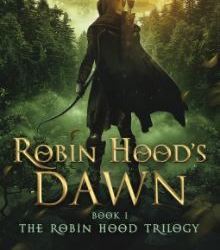
This post is a part of blog tour for Robin Hood’s Dawn, the first book in the trilogy about Robin Hood (obviously). Check back tomorrow to see the excerpt and my review of the book!
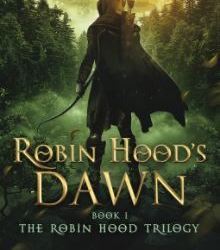
Robin Hood has been featured in many books, movies, and television shows. How is your story different?
We have taken a fresh approach to the Robin Hood story, and we’re excited to share our vision with fans of the…
View On WordPress
0 notes
Link
Great reviews, Q&A with me and Olivia Longueville, excerpts, and GIVEAWAYS! Thanks to all the great bloggers participating.
5 Days and 38 bloggers - we are overwhelmed by the great response to our book. Thank you!
A book co-written by a Robin fan and a Guy fan!
12 notes
·
View notes
Text
Between Two Kings by Olivia Longueville

Between Two Kings (Book One in Anne Boleyn Alternate History Trilogy)
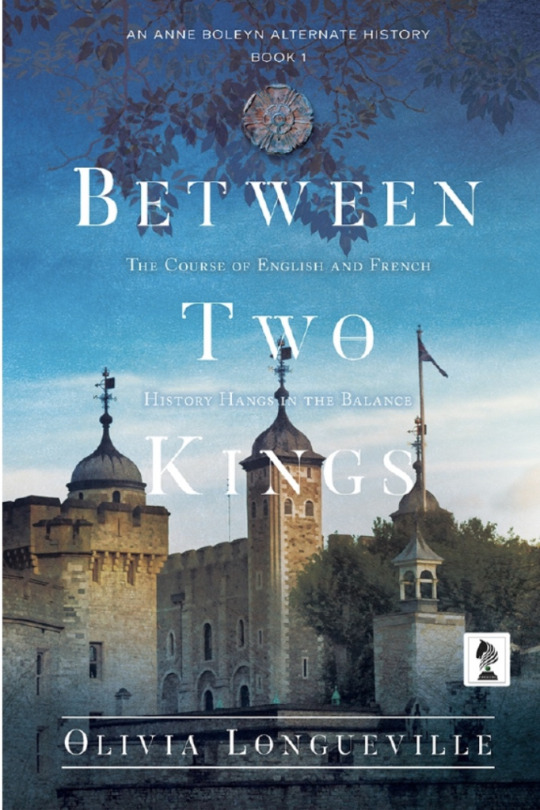
Anne Boleyn has been featured in many books, movies, and television shows. Her story has been told by writers many times. How is your historical fiction series different?
In my first book, Between Two Kings, I re-imagined the life of Anne Boleyn, the second wife of King Henry VIII of England. When I think about Anne…
View On WordPress
0 notes
Photo

🇮🇹Uno dei miei #currentlyreading è proprio Robin Hood's Widow, seguito della trilogia iniziata con Robin Hood's Dawn, di cui cari Books Lovers potete trovare la recensione sul blog, entrambi inviatemi dalla ce. J. C. Plummer e Olivia Longueville sono delle autrici fenomenali insieme, e come me amano moltissimo la serie della BBC su Robin Hood. Se avete letto la recensione del primo volume li avevo menzionato quando notassi delle somiglianze tra libri e serie e qualche giorno fa parlando con una delle autrici ho scoperto questo piccolo particolare che mi ha resa ancora più contenta di leggere questo secondo libro. Presto potrete trovare la recensione anche di Robin Hood's Widow sul blog... 🇺🇸 My currently reading is Robin Hood's Widow, sequel to Robin Hood's Dawn. I'll publish soon this review in the blog but in the mean time go read the review of the first volume of the trilogy. If you love Robin Hood and/or the BBC show with John Armstrong then you'll love this books. https://www.instagram.com/p/CEezpagKFiH/?igshid=vyqzt5jr0sx
0 notes
Text
9 notes
·
View notes
Text
“The Field of the Cloth of Gold”
On the 7th of June 1520, the sensational meeting of Kings of England and France occurred near Calais that was to become known to history as “The Field of the Cloth of Gold”. This luxurious meeting became the standards to which international peace treaties were measured in many years to come. There was the long history of tensions and rivalries between England and France, which the meeting was intended to put an end to.
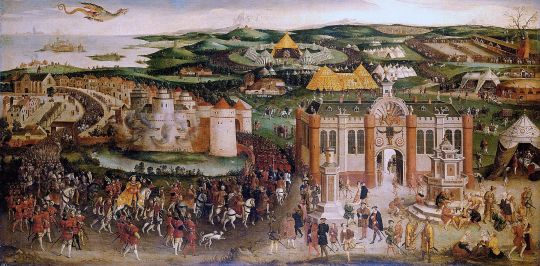
King Henry VIII and his first wife, Queen Catherine of Aragon, arrived in Calais on the 31st of May. Henry should have reached the English stronghold of Guînes on the same day, but instead he dispatched a page to the French ruler that the ladies of his large retinue of about 5,000 people were exhausted after the journey across the English Channel and needed a few days of rest. King François I did not object to the delay, but he nevertheless warned Henry to be at the meeting place on the planned day in time.
While the Tudor court rested for four days in Calais, King François and, his first wife, Queen Claude of France, together their huge train, were in the French town of Ardres. Accompanied by his own train of a hundred gentlemen clad in crimson velvet, Cardinal Wolsey paid a visit to François. The cardinal loved pomp and rode a mule with harnessing of fine gold and trappings of crimson velvet when he was met by French courtiers at Ardres. François hosted a banquet in Wolsey’s honor, and one would like to know what they discussed; there was gossip that the cardinal proposed to mediate between François and Charles V, who was only fifty or sixty miles away from Calais in Flanders at that time.
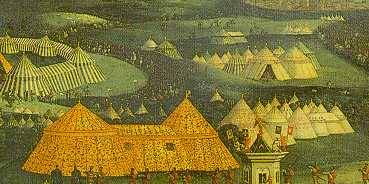
On the 5th of June 6, the French and English pitched their tents (approximately 2000!) near the field. However, there were last minute difficulties: Henry learned that the French had stationed between 3,000 and 4,000 soldiers nearby, so the summit was almost called off, but François prudently withdrew the troops. Most likely, memories of The Hundred Years’ War were still fresh in the minds of the French, so they resolved to try and defend the Valois family in case the English attacked.
A French historical account describes François I’s magnificence as he left Ardens.
“The King wore a cap of black velvet with feathers of the same color, and some large jewels in it very well set, which the King estimates at 2,000 ducats. His doublet was embroidered with gold knots, the shirt protruding from the slashes, the tags of which were most beautiful jewels. His breast was bare, and he had sleeves (manegetti). Over the doublet was a cloak of cloth of gold embroidered; at the back of the cloak a certain bit of cloth of gold slashed, looking like a half cape, or well nigh a half mantle, fastened over the left shoulder, which half cape or mantle was costly and ornamented with large jewels. On his legs, he wore white boots (burzachini bianchi).”
This description does not mean that the Valois monarch did not wear a shirt at all. The phrase ���his breast was bare” refers to a relative lack of jewels adorning that part of his clothes. Perhaps the king’s doublet was less lavishly embroidered on the front than on the sleeves.
An English contemporary account describes Henry VIII’s splendid appearance:
“The King of England wore a very handsome and costly doublet of cloth of silver, with a girdle and apron (traversa) or “sbarra” from the cincture to the shoulder, of cloth of gold studded with very beautiful jewels, and a black velvet cap with jewels and black feathers; and he rode a very handsome bay courser with a “trapper” embroidered in gold.”
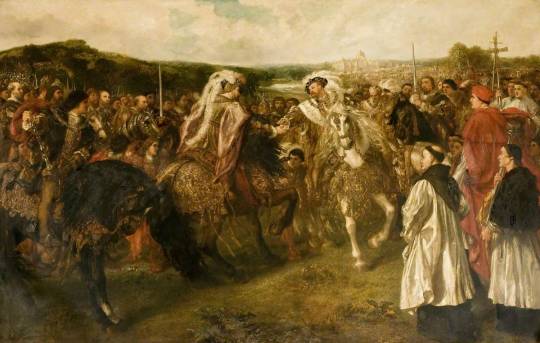
The meeting continued until the 24th of June. As Jean du Bellay reported in his papers, the two sovereigns decided to pass their time “en déduit et choses de plaisir” (in other words, in entertainments and pleasures), leaving negotiations to their councilors. For nearly two weeks, it was a mind-blowing and most eccentric display of riches and extravagance, which included, for example, “a forest of exotic pavilions” to house the English Court, “a wooden and canvas palace” to act as the King’s Chamber, as well as “two wine fountains flowing with red wine”. Every day, François and Henry were appareled in their most fabulous clothes as they did their best to outshine each other; their courtiers dressed in “velvet, satin and cloth of gold”. Those days were full of unprecedented festivities and merry jousts, lots of music and various games, as well as entertainments such as archery displays and wrestling between Breton and Cornish wrestlers. There were feasts in which the rulers entertained each other’s queens, as if swapping queens for an evening and allowing them to act as a hostess. On the summit, there was so much cloth of gold displayed on the tents and clothes that the site of the meeting was named after it.
The rest of the meeting, including the wrestling match between François and Henry, will be covered in another article next week.
All images are in the public domain. Text © 2019 Olivia Longueville
#King Francois I of France#King Henry VIII of England#royals Cardinal Wolsey#the Field of the Cloth of Gold
40 notes
·
View notes
Text
The Odyssey of Richard the Lionheart - A guest post by Olivia Longueville and J C Plummer
The Odyssey of Richard the Lionheart – A guest post by Olivia Longueville and J C Plummer
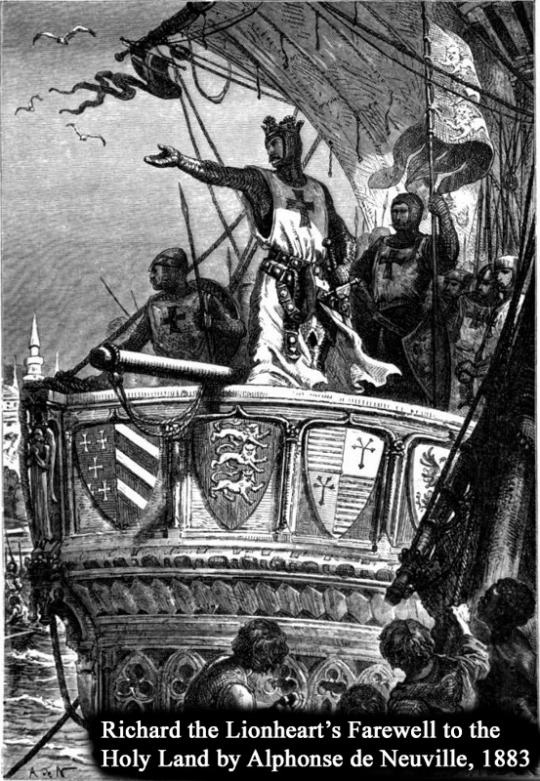
A warm welcome to Olivia Longueville and J.C. Plummer who have just released Robin Hood’s Widow, the second book in their Robin Hood Trilogy – a retelling of the Robin Hood story with an unusual and imaginative plot grounded in 12th century history.
On the night of October 9, 1192, two dozen men stealthily navigated through the ancient streets and alleyways of Acre towards the harbor. King…
View On WordPress
#Angevin Empire#Crusades#Eleanor of Aquitaine#Holy Roman Emperor Henry VI#King of England#King of France#medieval history#Philip II#Richard I#Richard the Lionheart#Saladin
0 notes
Text
Death of Geoffrey Plantagenet, Duke of Brittany
On this day in history in 1186, Geoffrey Plantagenet died in Paris. He was the fourth of five sons born to Henry II, King of England, and Eleanor, Duchess of Aquitaine. He died unexpectedly at the age of 27, in the prime of his life. There is also evidence that he might have died on the 21st of August, 1186.
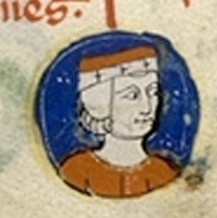
Geoffrey is one of the forgotten Angevin royals: he is rarely the focus of historians because he died young and was the only son of Henry and Eleanor who survived to adulthood, yet never wore a crown. In Angevin history, he has been called “a duke among kings.”
He was born at Beaumont Palace, Oxford. In her biography of Eleanor of Aquitaine, Marion Meade wrote of his birth:
“On September 23, 1158, without fuss or fanfare and almost seeming to be an afterthought, she [Eleanor] gave birth to another son, Geoffrey.”
Geoffrey’s Personality
There are no portraits of Geoffrey Plantagenet at any age known to exist. According to contemporary chronicles, Geoffrey was dark-haired and short of stature; he had an average appearance and was not considered good-looking, charming, or charismatic. He was probably the most intelligent son of Eleanor and Henry, but he used his talents for selfish schemes.

Geoffrey in the movie “Lion in the Winter”
It’s likely that the young Geoffrey was often overshadowed by the towering personalities which dominated the royal family. His father ruled vast lands and was one of the wealthiest and most successful kings of his time. His mother had been Queen of France before becoming Queen of England, and through the strength and determination of her personality, she maintained control over the vast, prosperous, and strategic Duchy of Aquitaine. Geoffrey’s two older brothers were the ambitious Henry the Younger and the man who would become famous as Richard the Lionheart.
Participation in “The Great Revolt of 1173-74”
These internal family tensions and ambitions led to what is today called, “The Great Revolt of 1173-74.”

Events in Normandy, summer 1173
At the age of fifteen, Geoffrey found himself swept up in this revolt against his father, although it is doubtful that he played any significant role in the events of the time. Eventually, Geoffrey and his brothers reconciled to Henry, and a truce was reached at Gisors in 1174. Unfortunately, this uneasy peace within the Plantagenet royal family was not destined to last.
Duke of Brittany
In July 1181, Geoffrey became the Duke of Brittany and Earl of Richmond upon his marriage to Constance, Duchess of Brittany. It was a marriage that had been carefully orchestrated by Henry II.
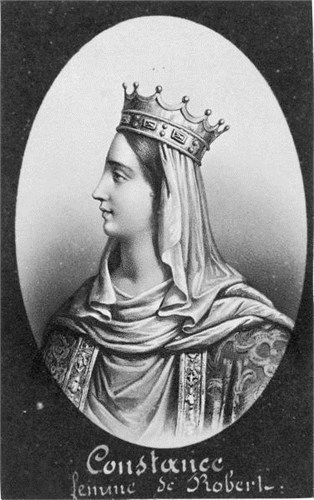
Constance, Duchess of Brittany
Years earlier, Henry had helped Conan IV, Duke of Brittany put down an uprising. Duke Conan might have assumed that Henry was helping him maintain control over the Duchy of Brittany, but Henry’s motives were much more mercenary: Henry decided that Brittany’s location on the western border of Normandy made it a desirable addition to his expansive kingdom.
After putting down the revolt in Brittany, Henry forced Conan to abdicate his title to his five year old daughter, Constance, and then he betrothed the little duchess to eight year old Geoffrey. According to Everard, Henry needed Conan’s abdication to prevent any son of the duke from inheriting the duchy in the future.
Geoffrey Plantagenet and his wife, Constance, had three children:
Eleanor, Fair Maid of Brittany, (1184–1241);
Maud/Matilda of Brittany (died in May 1189);
Arthur I, Duke of Brittany (he was born in 1187, after Geoffrey’s death, and was presumably killed in 1203 by his uncle, John I of England).
Another Revolt
By 1182, Plantagenet family tensions were once again reaching a boiling point.
Henry the Young King grew increasingly frustrated that his coronation had brought him relatively little wealth and no real power. Meanwhile, Richard ruled Aquitaine, where disgruntled nobles were able to exploit the tensions between the three brothers. Geoffrey joined Henry the Young King and threatened Richard. King Henry was required to intervene in an attempt to cool the tempers of his fractious brood.

Revolt against Henry II
It is the resolution of this second revolt where historians get their first glimpse of Geoffrey’s nature and temperament. Henry II and his sons all met in Anjou, at Mirabel, and the three sons took oaths that they would be obedient to the rightful King of England, their father, and would not rebel again.
Soon after taking this oath, Henry the Young King contracted dysentery in June 1183 and died in the Castle of Martel, near Limoges.
Following this second revolt, we get our first glimpse into the nature and personality of Geoffrey from a chronicler of the time, Roger of Hoveden:
“But the said Geoffrey, utterly forgetful of God and of respect for his father, and unmindful of his commands, did not bring peace, but the sword, and, slighting his oath, his homage, and the fealty which he had so often sworn to his father, entered into a compact with the enemies of his father, for the purpose of harassing him, and induced a sacrilegious race, and one detested by the Church of Rome, to ravage the territories of his father.”
Geoffrey allied himself with John Lackland, his youngest brother, against Richard. Later he joined with young Philippe Augustus, the King of France, against both his father and Richard. In response, Henry II made increasingly violent assaults upon any castle or fiefdom allied with Geoffrey, and, eventually, Henry and Richard captured all the rebellious castles, some of which they razed to the ground.
According to contemporary sources, Geoffrey didn’t have Richard’s great military talent, but he was a ruthless warrior who was capable of terrifying acts of violence. He was best known for his propensity to do anything to get his way. If he needed to raise funds for his campaigns, he attacked and robbed monasteries and abbeys, and it was this lack of reverence that earned him the displeasure of the Church.
Historians about Geoffrey
Roger of Hoveden called Geoffrey ‘that son of iniquity and perdition.’ In her book “Eleanor of Aquitaine: By the Wrath of God, Queen of England,” Alison Weir writes:
“Geoffrey’s life would be that of an ambitious and opportunistic robber baron. Ruthless in warfare, he plundered at will, not hesitating to sack abbeys and shrines. He had few scruples, and confronted his critics with devious and shameless excuses.”

Geoffrey with his mother, Eleanor, in the movie “Lion in the Winter”
In his biography of Henry II of England, Richard Barber says:
“Geoffrey, though skilled in military affairs, eloquent and astute, never won men’s hearts or admiration as his elder brothers had done; he took after his Angevin grandfather, in whose dry and ambitious nature these three qualities predominated.”
Geoffrey Plantagenet was a good friend of Philippe Augustus, the son of King Louis VII of France. He spent time at the French court in Paris, and Philippe even made him his seneschal (a royal steward overseeing the entire country), much to the displeasure of the English monarch. Philippe and Geoffrey acted in alliance against Henry II in the revolt of 1183-1184. Some evidence supports the claim that the two men were planning another rebellion against Henry II in the summer of 1186, but Geoffrey’s sudden death precluded them from launching it.
Having conspired sometimes with and sometimes against his elder brothers and his father, Geoffrey Plantagenet, Duke of Brittany, acquired a reputation for treachery and perdition.
A Cambro-Norman archdeacon of Brecon and historian, Gerald of Wales was a royal clerk to the king and two archbishops. He often traveled and wrote detailed chronicles. He wrote the following of Geoffrey, Duke of Brittany:
“He has more aloes than honey in him; his tongue is smoother than oil; his sweet and persuasive eloquence has enabled him to dissolve the firmest alliances and by his powers of language able to corrupt two kingdoms; of tireless endeavour, a hypocrite in everything, a deceiver and a dissembler.”
Death in Paris
At the time of his death, Geoffrey Plantagenet was at the French court. There are two alternative accounts of his death. The most popular version is that the Duke of Brittany was trampled to death in a jousting tournament. According to Roger of Hoveden, Philip was so grief-stricken and devastated that he attempted jumping into the coffin – this is likely an exaggeration, although other chronicles also give some details of Philip’s hysterical grief.
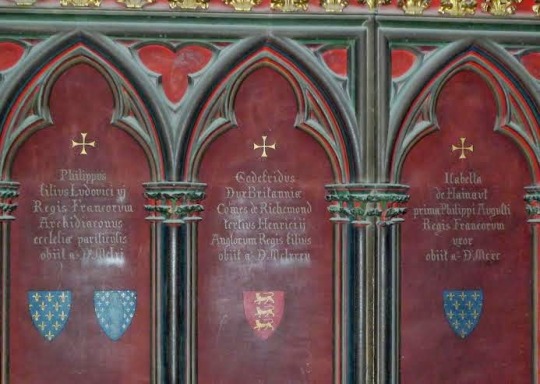
Geoffrey’s tombstone
According to the chronicle of the French Royal clerk Rigord, Geoffrey died of sudden acute chest pain in his chest, which was said to be his punishment for plotting against his father and for his lack of respect to the Lord. In this chronicle, it is said that Geoffrey was struck by that illness immediately after boasting to Philippe of his intention to lay Normandy to waste. It is typical of this time period for chroniclers to invent a manner of death that provides a sense of justice for the sins of the person who has died. Most historians doubt the veracity of this account of Geoffrey’s death.
Likewise, some historians think that the story of Geoffrey’s death in a tournament was invented by Philip in order to keep Henry II from learning about a new plot against him.
However, it is known that Geoffrey Plantagenet enjoyed tournaments and did participate in them.
Because he drew his last breath in France, Geoffrey’s body was not taken to England for burial. He was put to eternal rest in the choir of Notre Dame de Paris Cathedral, but his tombstone was destroyed in the 18th century, before the French revolution.
All images are in the public domain.
Text © 2017 Olivia Longueville and J.C. Plummer
19 notes
·
View notes
Note
hi, sorry to be a bother, but i was wondering if u knew any alternatives to Philippa Gregory?? I really want to get into Tudor history and I love historical fiction but I've heard so much criticism of her work xx
Unfortunately a lot of period books are going to be steeped in a certain level of creative license which sacrifices historical details to the ideal or romanticised effect. Most major Tudor writers – Weir, Plaidy, Gregory - are guilty of this. Personally I can look past this and enjoy the content for its historical setting and loose interpretation, but if that is a deal breaker for you there are a slim number of authors who will likely appeal to you. If you are disinterested in Gregory, I would recommend Alison Weir and Jean Plaidy. Their novels are chock full in historical references and are of a similar style to Gregory. As I understand it their’s are more credible, the exception being Weir tends to take a biased standpoint, and Plaidy is more of a story-writer than she is a historian.
You’ve probably already heard of Hillary Mantel’s Wolf Hall series. I read its entirety and enjoyed it, but there are errors strewn through it. On the opposite end, Adrienne Dillard’s works tend to be more true to history and from what I’ve gathered the author herself is an all-around good person. I highly enjoyed The Raven’s Widow as opposed to Gregory’s interpretation to Jane Boleyn. Olivia Longueville is also a recommended author. Sharon Kay Penman, Ken Follett, Katharine Longshore, Diane Haeger, and Margaret George all have interesting and well-researched reads. I loved the Autobiography of Henry VIII by George. It reads fantastically.
I hope this helps! Enjoy your summer reading.
64 notes
·
View notes
Note
hello there, your blog is one of my most favourite blogs i follow, and i wondered if you had any recommendations for other blogs to follow? ❤️
Aw, thank you so much for the compliment! For historical blogs in general, I made these two rec lists last year and I definitely encourage you to check them out! For blogs that put a lot of focus on Anne in particular, here are some of my faves:
boleynqueens always has thoughtful and well-researched answers to questions about Anne, and she’s also the author of a modern Tudors fic you may have run into at some point. peremadeleine, lochiels, madamelamarquys, thefreakyfun, anneboleynqueen and anneboleyns make really lovely edits. thisfalconwhite, thesunhasgonewibbly, lucreziaborgia, video-et-taco, tiny-librarian and margarettudor reblog plenty of Anne content. ladyjaneparker is a staunch defender of Jane Parker and has lots of fun thoughts about her relationship with Anne. And for long, in-depth research posts and analyses, there’s olivia-longueville and of course lissabryan, both of whom have written fiction involving Anne as well!
As usual I’ll probably think of five other blogs the minute I hit post, but I hope this is enough to get you started!
10 notes
·
View notes
Text
Professor Owl's Book Corner ~ Book review of the week ~ April 7th. 2018
Professor Owl’s Book Corner ~ Book review of the week ~ April 7th. 2018
Robin Hood’s Dawn (The Robin Hood Trilogy Book
by Olivia Longueville (Author), J. C. Plummer (Author)

A unique retelling of the Robin Hood legend!
England, 1154-1194:
• A kingdom under assault. • A conspiracy born of anarchy. • A hero standing against tyranny.
Falsely convicted of a shocking crime, Robin Fitzooth, the Earl of Huntingdon, finds refuge in Sherwood Forest and becomes Robin Hood.
Le…
View On WordPress
#1154-1194#A conspiracy#A hero#A kingdom under assault#A unique retelling of the Robin Hood legend! England#born of anarchy#standing against tyranny.
0 notes